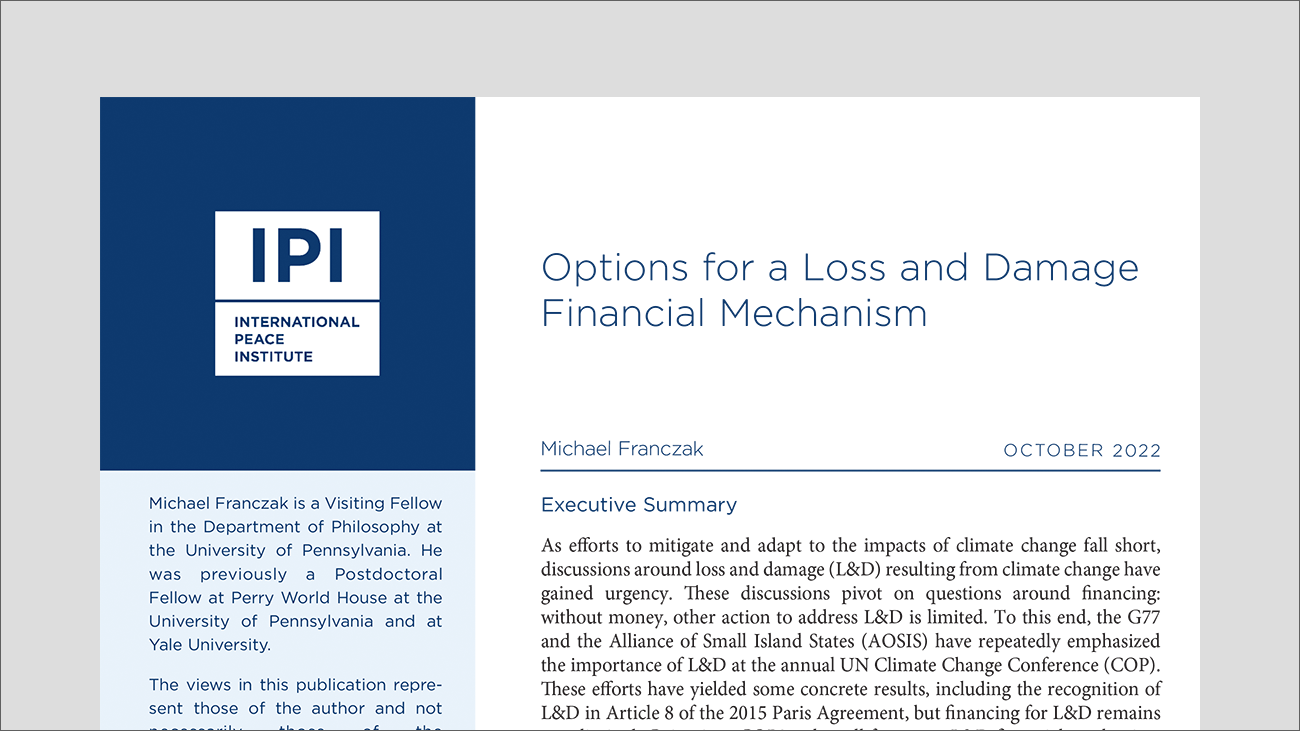
As efforts to mitigate and adapt to the impacts of climate change fall short, discussions around loss and damage (L&D) resulting from climate change have gained urgency. These discussions pivot on questions around financing, which remains very limited. Going into the twenty-seventh UN Climate Change Conference (COP27), the call for a new L&D financial mechanism has been raised by developing countries.
This paper provides a brief overview of the state of play of global negotiations on L&D and explores options for funding arrangements for addressing L&D in the context of the positions of the G77 and Alliance of Small Island States (AOSIS). The paper considers options related to four key questions concerning a new mechanism for financing L&D:
- Where will it be located? A new L&D financial mechanism could be located within the climate regime. However, there could also be complementary mechanisms outside the climate regime.
- Who will pay for it? There are two broad options for funding: ask for public contributions from donors or impose new taxes. An L&D financial mechanism could adopt both approaches, though some taxes could negatively impact some of the very countries advocating for L&D.
- Who will control it? Any mechanism should be guided by the principle of Common But Differentiated Responsibility and should be new and additional; needs-based, adequate, and predictable; public and grant-based; guided by vulnerability criteria; and locally driven.
- What will it do? The fund should make clear how L&D is both distinct from and linked to mitigation and adaptation and should take special care to address critical gaps in financing for slow-onset and noneconomic losses.







